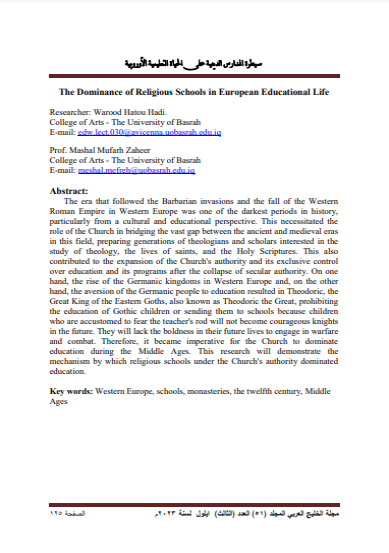The Dominance of Religious Schools in European Educational Life
Keywords:
Western Europe, schools, monasteries, the twelfth century, Middle AgesAbstract
The era that followed the Barbarian invasions and the fall of the Western Roman Empire in Western Europe was one of the darkest periods in history, particularly from a cultural and educational perspective. This necessitated the role of the Church in bridging the vast gap between the ancient and medieval eras in this field, preparing generations of theologians and scholars interested in the study of theology, the lives of saints, and the Holy Scriptures. This also contributed to the expansion of the Church's authority and its exclusive control over education and its programs after the collapse of secular authority. On one hand, the rise of the Germanic kingdoms in Western Europe and, on the other hand, the aversion of the Germanic people to education resulted in Theodoric, the Great King of the Eastern Goths, also known as Theodoric the Great, prohibiting the education of Gothic children or sending them to schools because children who are accustomed to fear the teacher's rod will not become courageous knights in the future. They will lack the boldness in their future lives to engage in warfare and combat. Therefore, it became imperative for the Church to dominate education during the Middle Ages. This research will demonstrate the mechanism by which religious schools under the Church's authority dominated education.




